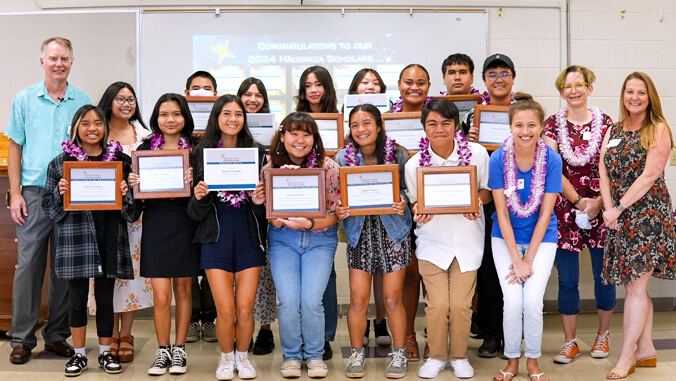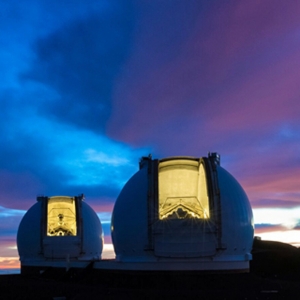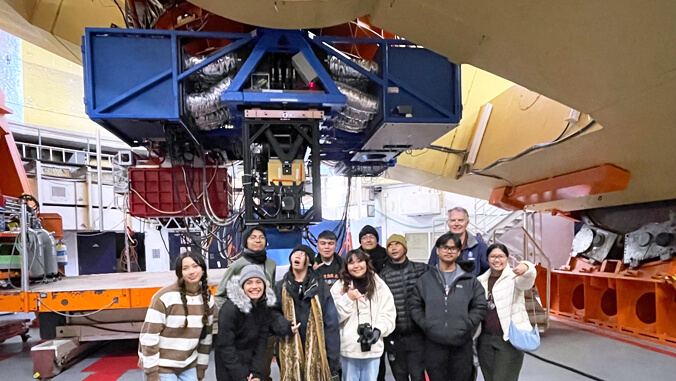
Astronomy enthusiasts from Kapolei High School are over the moon after earning telescope viewing time on Maunakea. Guided by mentors from the University of Hawaiʻi’s Institute for Astronomy (IfA), their achievement is part of the Maunakea Scholars program, which provides high school students time to utilize observatories on Maunakea and Haleakalā to conduct their own research.
“Our goal is to spark excitement for discovery among these local students, propelling them toward a future where the stars are no longer out of reach,” said Doug Simons, director at IfA. “Worldwide only Hawaiʻi high school students have access to major observatories to conduct their research projects, making this a unique and priceless education opportunity for our keiki.”

On February 8, 11 Kapolei High School students rejoiced as their research proposals were handpicked by a panel of seasoned astronomers, earning them prized telescope time. Among them, junior Kaitlyn Niitani will delve into the realm of twin-jet nebulae at W.M. Keck Observatory on Maunakea. Jet nebulae are celestial clouds of gas and dust and serve as cosmic laboratories for understanding the birth of stars.
“I was really compelled by all the new discoveries I was able to find out about, and I think I would actually like to continue this as a hobby because it’s that interesting to me,” Niitani said.
The Maunakea Scholars initiative also embraces other Kapolei students exploring realms from black holes to star clusters and beyond.
Full-circle orbit
Since its inception in 2015, the groundbreaking program has empowered hundreds of local high schoolers to explore astronomy careers through Maunakea’s powerful telescopes. It’s all too familiar for Kapolei teacher Laura Daclison, a Maunakea Scholars alumna awarded telescope time in 2018 while attending Waipahu High School. Using the Keck Observatory, Daclison performed astronomical observations of Kepler-35, dubbed the Star Wars planet because like Luke Skywalker’s home planet of “Tatooine,” it orbits two stars. Daclison, now a chemistry teacher at Kapolei, has literally come full circle and now oversees the next generation of Maunakea Scholars.
“I took my students to the summit of Maunakea and they had the opportunity to experience telescope technology firsthand, things that they can’t get anywhere else in the world, so hopefully this will ignite more passion into future astronomers with this new experience,” Daclison explained.
Expanding horizons
Maunakea Scholars was initiated by Canada-France-Hawaiʻi Telescope (CFHT) and Gemini Observatory in partnership with the Maunakea Observatories and the Hawaiʻi State Department of Education.
“My goal for the future of the Maunakea Scholars program is to see it in all 40 high schools across the state of Hawaiʻi,” said Mary Beth Laychak, director of communications and community engagement at CFHT. “It’s a program that every public high school in the state should have access to and something that we’re working towards.”


